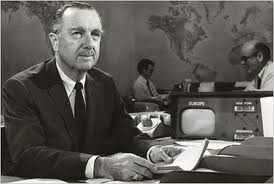Is Humor Persuasive?
 Speakers often begin their presentations with a joke. Sometimes it’s funny. Sometimes it’s relevant. Sometimes it’s none of the above. Can humor help persuade an audience? Well, yes and no. Self-deprecating humor can help you build credibility with an audience and that can help you be persuasive.
Speakers often begin their presentations with a joke. Sometimes it’s funny. Sometimes it’s relevant. Sometimes it’s none of the above. Can humor help persuade an audience? Well, yes and no. Self-deprecating humor can help you build credibility with an audience and that can help you be persuasive.
But the main reason to use humor is to hold the audience’s attention. People like to laugh. So if you make them laugh early in a presentation, they’ll look for additional laugh cues later in the presentation. They’ll pay more attention because they don’t want to miss your next joke.
On the other hand, humor will never move an audience to action. People who are laughing just want to keep on laughing. If you want an audience to actually do something, the most potent emotion is anger. Humor helps people absorb information. Anger moves people to action. It’s why our political ads are so angry. Learn more in the video.
Speaking Human
When we want to let people know how smart we are during a speaking presentation, we often dress up our language. We use more formal diction, bigger words, and formidable phrasing. We often toss in a lot of jargon as well. Typically, however, it doesn’t work. We just sound stuffy, self-important, and boring. We’re trying to show the audience how smart we are which is always a losing strategy. Much better to show the audience how smart they are. You do this by speaking human — conversational, easy-to-understand, and plain spoken. As the saying goes, you should eschew obfuscation. Learn more in the video.
Why go to a live presentation?
 Why do people come to live events? Years ago, it was because they wanted to hear the latest news. Content was king and people came to hear the newest, latest, most exciting news. Today, content is everywhere. You can get it from the web, from books, from text
Why do people come to live events? Years ago, it was because they wanted to hear the latest news. Content was king and people came to hear the newest, latest, most exciting news. Today, content is everywhere. You can get it from the web, from books, from text
messages, from Twitter, or from television. So why go to a live event? Increasingly, it’s about context. It’s about making commitments and creating networks. As you plan your live events, don’t put all the emphasis on content. Leave time and create opportunities to develop a context for people to interact. They’ll get the content from many sources. Make sure they get the context from your event. Now watch the video.
The First Three Minutes
 My clients often describe the first three minutes of a speaking presentation as “pure torture.” You need to step up, capture the audience’s attention, establish your credibility, and lay out your key themes. At the same time, you need to remember your key messages, your communication objectives, and the sound bites that you want your audience to walk away with. It’s a lot to remember and the pressure is likely to raise your blood pressure and play havoc with your memory. But, relax. There are three simple tips to help you stay on message while remaining comfortable and confident. Just watch the video.
My clients often describe the first three minutes of a speaking presentation as “pure torture.” You need to step up, capture the audience’s attention, establish your credibility, and lay out your key themes. At the same time, you need to remember your key messages, your communication objectives, and the sound bites that you want your audience to walk away with. It’s a lot to remember and the pressure is likely to raise your blood pressure and play havoc with your memory. But, relax. There are three simple tips to help you stay on message while remaining comfortable and confident. Just watch the video.
Content With Your Content?
How much can you say in a 30 minute presentation? How much should you say? Should you aim for more content or less? What’s the difference between a TV newscast and a newspaper? Your persuasive presentation is more like a newscast. It summarizes the key issues and creates a desire to learn more. You speak at about 120 words per minute. That means about 3600 words in a 30 minute presentation. That’s long enough to use your communication skills to summarize the headlines but not enough to give every last detail. Don’t talk faster to fit more in. You need to shrink the content to fit the space available. Learn how in this video.
